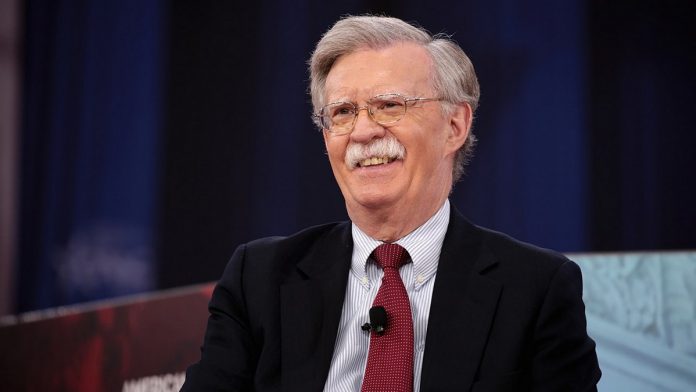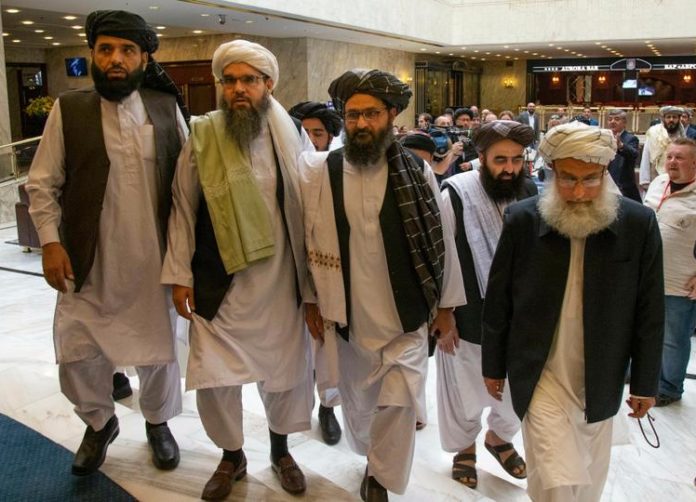Introduction
The United States and the Taliban have held some rounds of talks with the objectives to bring about a lasting deal in Afghanistan; so far, no meaningful progress has been made. In the last few days, two major meet-ups have taken place in Beijing and Moscow in order to build upon the impetus generated by the United States (US)-Taliban meeting in Islamabad in early October and explores the prospects of kick-starting the stalled peace process with the Taliban. Though the peace talks remain suspended for the time being, President Trump’s tweet in September has provided an opportunity to the warring sides to look back at the nearly year-long process of negotiations and learn from the shortcomings and mistakes that were committed by each side.
The Afghan Peace Talks: Nine Rounds with No Success
- First and foremost, both the US and Taliban held nine rounds of intensive negotiations to arrive at a “peace agreement”.
- US President Donald Trump called off peace negotiations with the Taliban that sought to end America’s 18-year war in Afghanistan. Mr. Trump tweeted that he had been set to meet Afghan President Ashraf Ghani and senior Taliban leaders on Sunday.
- He cancelled the secret meeting at his Camp David retreat after the militants admitted they were behind a recent attack that killed a US soldier. If the killing of American serviceman was the reason, the Trump administration would not have entered into talks in the first place since this year alone at least 16 soldiers have been killed in Taliban attacks.
- Washington tacitly accepted the Taliban’s three basic demands to lift the sanctions against its leaders, to release prisoners, and to recognize the Taliban’s office in Qatar.
· Hurdles to Afghan Peace Deal
· Restricting the US Deep State
Most sinister is the theory that the US deep state is not interested in peace in this region, and has extracted vital concessions regarding permanent or scheduled presence of the US military and intelligence assets on the Afghan soil, to keep rising China and Pakistani nukes in check; in exchange for the much needed resources required for the building, reconstruction and development of Afghanistan.
· US considers the deal a surrender
One assessment is that some in the US have perceived the imminent peace deal with the Taliban as a document of surrender. John Bolton, Trump’s former National Security Adviser, staunchly opposed peace talks with the Taliban. Apparently, he succeeded in scuttling the meeting at Camp David. But Bolton’s unceremonious removal suggests that Trump is still interested in a peace deal.
· US Inclination for a Permanent Deal
One possible reason behind Trump’s last-minute decision may be to persuade the Taliban to agree to a permanent ceasefire, something the group has long resisted.
· Indian Design to Scuttle Afghan Peace Deal
India has continued to obstruct the final deal in many ways. The absence of a political settlement would continue to provide India with a platform in Afghanistan to create trouble at the eastern and western fronts. Perhaps that’s why India, which is increasingly upset over being left out of the Pakistan-facilitated peace process, was quick to welcome Trump’s decision to call off the peace talks.

The Way Out/ Prospects for Sustainable Peace in Afghanistan
1. Making All Afghan part of the Deal
The Afghans should be made stakeholders in a final deal. The latest survey conducted by the Asia Foundation reveals that a staggering 88.5% of Afghan population welcomes peace talks between the United States (US) and Taliban. Furthermore, at least 64 per cent of the respondents, according to the survey, also believe in the possibility of consensus on power-sharing between the Afghan government and Taliban.
2. Not Withdrawal but Sustainable Peace Should Be the Objective
Therefore, any future re-engagement of the warring sides should build on the spirit of bringing sustainable peace to the war-torn country.
3. The Proposed Deal Should Address the Root Causes of Afghan Conflict
A peace sensitive process should address the root causes of the ongoing conflict in Afghanistan and offer a framework that could effectively address them.
4. The ownership of the process should lie with the Afghan state and society.
Any success of the future negotiations depends upon one core factor: the ownership of the process should lie with the Afghan state and society. The previous engagement between the US and the Taliban excluded the Afghan government from partaking in the deliberations, which was akin to delegitimizing the latter. The Afghan peace process would have more chances of success if it is Afghan-led and Afghan-owned.
5. The reconciliation process should have the elements of commitment and sense of ownership
Any reconciliation process cannot bring the desired results if it lacks the elements of commitment and sense of ownership by all the warring parties, peace brokers and the Afghan people upon whom the reconciliation agreement will apply. In the case of Afghanistan, everyone seemed to be zealously pursuing their narrow vested interests. The US seemed to be in a rush to withdraw with a minimum possible role in the future. The Taliban seemed to be rushing towards declaring a quick victory. The Afghan government seemed to be waiting for the collapse of the talks or any subsequent deal. The Afghan people seemed worried about the return of a triumphant Taliban who could nullify the gains made by the country in the past 18 years.
6. The post-election Afghan government needs to be a part and parcel of the negotiation process.
Any post-election Afghan government needs to be a part and parcel of the negotiation process. The US should put the ball in the Taliban’s court by not agreeing to the Taliban’s demand of resumption of negotiations if the Afghan government is not part of the parleys.
7. The US along with Russia, China, Pakistan and Iran should facilitate the resumption of dialogue between the Afghan government and the Taliban.
The US along with Russia, China, Pakistan and Iran should facilitate the resumption of dialogue between the Afghan government and Taliban. The issue of foreign troops’ withdrawal, counterterrorism commitments, comprehensive ceasefire and intra-Afghan dialogue should be discussed among the US, Taliban and the Afghan government initially but later on, the process should be picked up by the Afghans only along with the Taliban.
8. Accord Should Facilitate the Safe Withdrawal of Foreign Troops
Any agreement reached to this effect would help the withdrawal of foreign forces and a smooth transitioning to an intra-Afghan dialogue. Such a process would have more credibility and a sense of ownership among the Afghans.
9. The Taliban Leadership Should Ensure that They will keep their Promises
One of the concerns expressed by Pompeo was whether the Taliban leadership could deliver on their promises. So, the Taliban should guarantee the US that they will keep up their promises.
10. US Support to the Taliban against Daesh
Washington ought to cooperate with the Taliban to stamp Daesh out from Afghanistan. The US needs to understand that the Taliban may not need manpower to combat and root out ISIS; they would need US air, intelligence, surveillance, logistics and other support to fight this common threat, subsequently.
Concluding Remarks
The current quagmire in Afghanistan is primarily an intra-Afghan conflict, based on divergent ideologies and worldly outlook. The US and NATO are external actors whose exit is inevitable. However, their presence since 2001 has made them an important stakeholder in the conflict. That is why any US withdrawal should carry a general approval of the Afghan masses and should be based on a solid roadmap that could take Afghanistan towards sustainable peace and set the path for its development. A peaceful resolution of the conflict would lead to a significant reduction in violence and end of bloodshed. It will provide long-term peace, stability and prosperity for future the generations of Afghanistan.
Contributed by:
Alifiya Aun Ali





